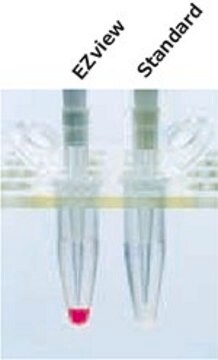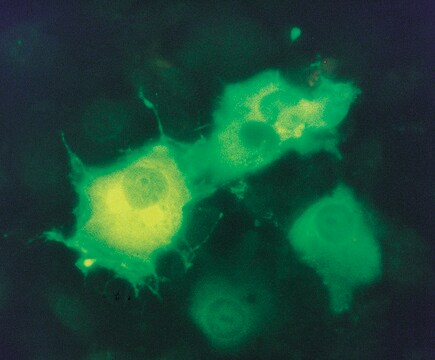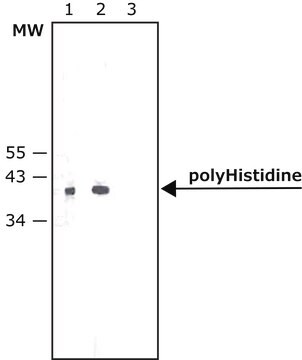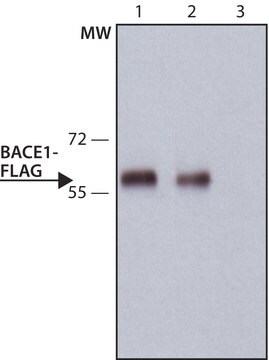P2983
ANTI-FLAG® High Sensitivity, M2 coated 96-well plates
96-well, clear, polystyrene, flat bottom plate
Synonym(s):
Monoclonal ANTI-FLAG® M2 antibody produced in mouse, Anti-ddddk, Anti-dykddddk
About This Item
Recommended Products
antibody product type
primary antibodies
Quality Level
material
polystyrene
clone
monoclonal
shelf life
Unopened plates are stable for 2 years. Once opened they are stable for 2 weeks.
technique(s)
ELISA: suitable
isotype
IgG1
capacity
100-300 ng/well
storage temp.
2-8°C
Looking for similar products? Visit Product Comparison Guide
General description
Application
Learn more product details in our FLAG® application portal.
Storage and Stability
Other Notes
The plate is supplied as a 96-well microtiter plate with clear sides and bottom.
Coating:
ANTI-FLAG® M2 mouse monoclonal antibody, IgG1, is coated at a reaction volume of 200 ml/well.
Blocking:
The wells are pre-blocked for convenience at 275 to 300 ml/well with a complex solution containing bovine serum albumin.
Specificity:
The plates are specific for the FLAG epitope regardless of its placement in the fusion protein: amino-terminal, Met-amino terminal, carboxy terminal or internal. Binding of the epitope is not Ca2+ dependent.
Sensitivity:
Detection of 1 ng/well of a control fusion protein was observed in an ELISA format with p-Nitrophenyl Phosphate (pNPP) as a substrate.
Capacity:
Capture of 100 to 300 ng/well of a FLAG fusion protein has been demonstrated.
Legal Information
Not finding the right product?
Try our Product Selector Tool.
related product
Choose from one of the most recent versions:
Already Own This Product?
Find documentation for the products that you have recently purchased in the Document Library.
Customers Also Viewed
Related Content
Protein purification techniques, reagents, and protocols for purifying recombinant proteins using methods including, ion-exchange, size-exclusion, and protein affinity chromatography.
Protein expression technologies for expressing recombinant proteins in E. coli, insect, yeast, and mammalian expression systems for fundamental research and the support of therapeutics and vaccine production.
Our team of scientists has experience in all areas of research including Life Science, Material Science, Chemical Synthesis, Chromatography, Analytical and many others.
Contact Technical Service











